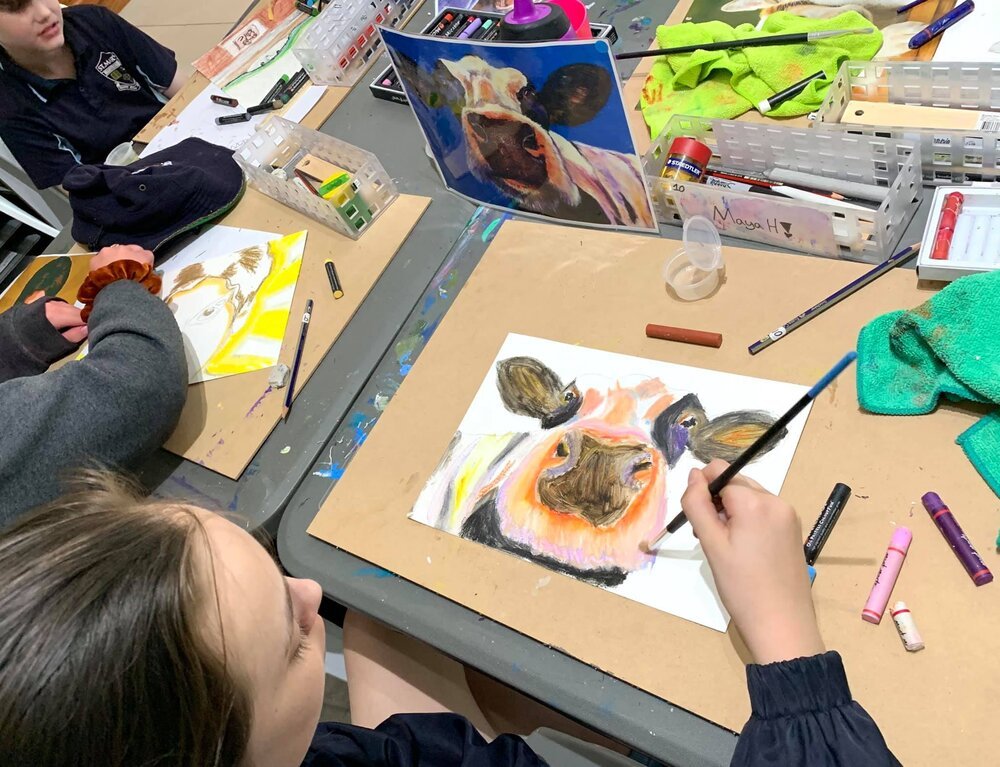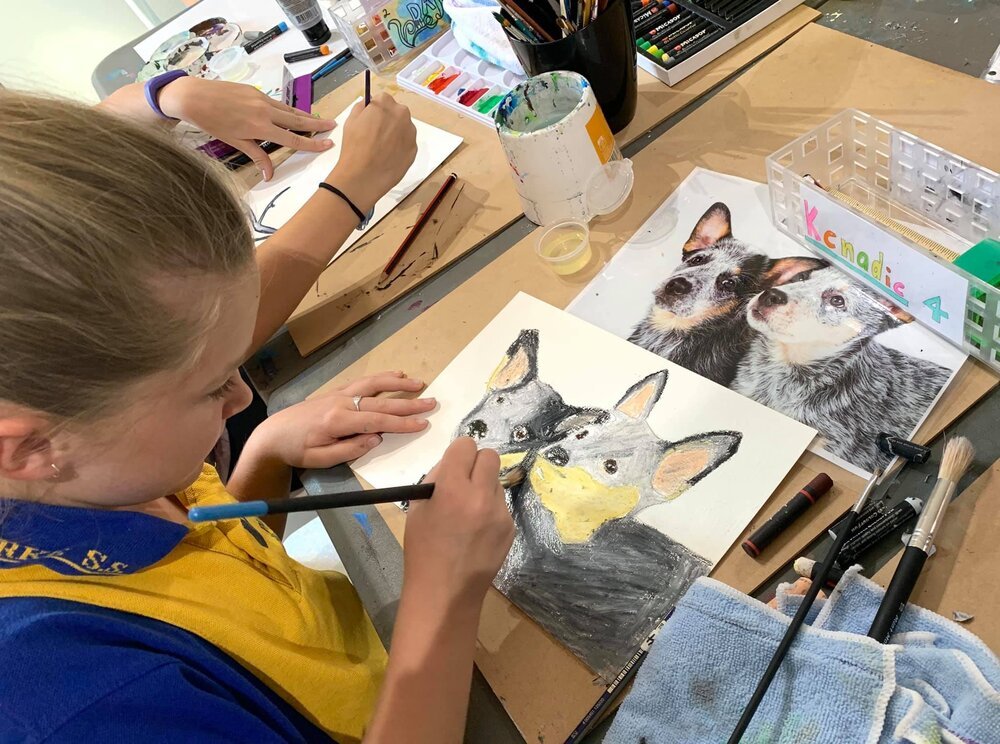How to paint with oil pastels!
3 STEPS TO CREATING AN ECO-FRIENDLY PASTEL PAINTING
Earlier this year I attended an Oxlades Micador workshop in Maryborough, QLD with art teachers from the Wide Bay region. One of the interesting techniques demonstrated by Cheryl provides an oil painting experience without the hassle of mixing paints and lengthy painting process.
This technique is not only eco-friendly, it is cheap and easy to do, making it a perfect activity for all skill levels. This tutorial explains the process in three easy steps!
Step 1: Gather materials
Gather your supplies with the following materials list:
oil pastels (any brand of oil pastel works, I have used the Micador non-toxic range in the tutorial)
canola oil (any cooking oil or baby oil is suitable)
hog hair brushes
*oil painting canvas paper
rag
pencil and rubber
*Note regarding paper selection. I have experimented with different types of papers. The Lady Gaga example I have provided is on oil canvas paper which I think closely replicates the oil painting experience. You can also use watercolour paper, however I did find there is less time to develop your work and less layering the paper is willing to put up with. However, this does make watercolour paper a great option for a quick activity with school students when there is minimal time for work to dry.
A quick example I created using this technique on Raines 300gsm watercolour paper.
Step 2: Composition design
When starting any art project, I always begin with a quick pencil sketch in my visual diary or scrap paper outlining my composition. If you are unsure, sketch out several ideas until you create one that feels right. If you are referencing a photo, select the area of the image you will use in your artwork. Composition design is also a great time to plan your colour palette.
An example of a students work space with reference image, composition design sketch and artwork in progress.
Once you are happy with your composition, outline in pencil your design onto the canvas paper as shown in the picture below. There is no need to add in too much shading.
Step 3: paint with pastels!
I found the best way to get started is to apply a base colour with the oil pastel as normal. You can blend colours by layering the oil pastels.
The magic happens when you apply the canola oil with a brush onto the pastel and watch the pastel melt into a liquid form. Do not apply too much oil at once or you will thin out your colours too much. In my example video below you will see I alternate between applying oil pastel and using the brush to blend my colours.
If you have the time to take a break, give yourself some space to not only allow the oil to dry a little, but also to give your eyes a fresh look upon your return. I always find it useful to have some distance from my work so I can see what I need to fix. Watch the video now to see the entire process from start to finish!
Below are some gorgeous examples by my students applying this technique on oil canvas paper.
I hope this article has inspired you to get your oil pastels out and give this technique a go! If you have any questions about this technique, or would like to add your own creative applications I would love to hear from you!
Happy creating :)








